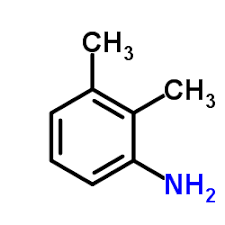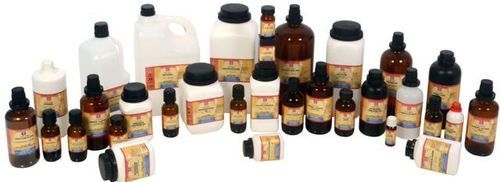Tributyltin Chloride
Tributyltin Chloride Specification
- Usage
- Lab Chemicals
- Storage Instructions
- Dry Place
- Grade
- Industrial
- Type
- Industrial Lab Chemicals
- Application
- Lab Chemicals
- Purity(%)
- 99.99
About Tributyltin Chloride
Tributyltin ChlorideLC5571 Tributyltin chloride for synthesis Order number Packaging Quantity Price AC32571 Glass bottle 100 ml 23.63 Product information Synonyms Chlorotributyltin, Chlorotributylstannane Hill Formula C12H27ClSn Chemical formula (CH3CH2CH2CH2)3SnCl HS Code 2931 00 99 EC number 215-958-7 Molar mass 325.48g/mol EC index number 050-008-00-3 CAS number 1461-22-9 Chemical and physical data Ignition temperature >150C Solubility 0.017g/l (20C) Melting point -9C Molar mass 325.48g/mol Density 1.20g/cm3 (20C) Boiling point 140C (13hPa) Vapor pressure <-0.01hPa (20C) Flash point >100C Refractive index 1.4905 (20C, 589nm) Safety information according to GHS Hazard Statement(s) H301: Toxic if swallowed.H312: Harmful in contact with skin.H372: Causes damage to organs through prolonged or repeated exposure.H319: Causes serious eye irritation.H315: Causes skin irritation.H410: Very toxic to aquatic life with long lasting effects. Precautionary Statement(s) P273: Avoid release to the environment.P302 + P352: IF ON SKIN: Wash with plenty of soap and water.P305 + P351 + P338: IF IN EYES: Rinse cautiously with water for several minutes. Remove contact lenses, if present and easy to do. Continue rinsing. Signal Word Danger Hazard Pictogram(s RTECS WH5775000 Storage class 6.1A Combustible substances, toxic WGK WGK 3 highly water endangering Disposal 15Heavy metal-containing solutions and solids: container E. Stir Raney nickel (also: Urushibara nickel) in the form of an aqueous suspension into hydrochloric acid (Cat. No. 100312) until dissolved (container E). Neither Raney nickel itself nor any filter residues should be allowed to dry out, otherwise they will spontaneously ignite in air. In this context, heavy metal means any compound of antimony, arsenic, cadmium, chromium(VI), copper, lead, nickel and tin, as well as these subtances in metallic form, if they are classified as hazardous (acc. to AbfallverzeichnisV - Waste Catalogue Ordinance, Appendix 3). Other heavy metals should be collected separately. Safety information R Phrase R 21-25-36/38-48/23/25-50/53Harmful in contact with skin.Toxic if swallowed.Irritating to eyes and skin.Toxic: danger of serious damage to health by prolonged exposure through inhalation and if swallowed.Very toxic to aquatic organisms, may cause long-term adverse effects in the aquatic environment. S Phrase S 35-36/37/39-45-60-61This material and its container must be disposed of in a safe way.Wear suitable protective clothing, gloves and eye/face protection.In case of accident or if you feel unwell, seek medical advice immediately (show the label where possible).This material and its container must be disposed of as hazardous waste.Avoid release to the environment. Refer to special instructions/ Safety data sheets. Categories of danger toxic, irritant, dangerous for the environment Hazard Symbol Toxic Dangerous for the environment Transport information Declaration (transport by sea) IMDG-Code UN 3146 ORGANOTIN COMPOUND, SOLID, N.O.S.(TRIBUTYLTIN ACETATE), 6.1, III, Marine Pollutant: P Declaration (transport by air) IATA-DGR UN 3146 ORGANOTIN COMPOUND, SOLID, N.O.S.(TRIBUTYLTIN ACETATE), 6.1, III Toxicological data LD 50 oral LD50 rat 99 mg/kg Specifications Assay(GC, area%) 97% Density(d 20C/ 4C) 1.199 - 1.204 Identity (IR) passes testFAQs of Tributyltin Chloride:
Q: What is the purity of Tributyltin Chloride?
A: Tributyltin Chloride has a purity of 99.99%.Q: What is the recommended storage condition for Tributyltin Chloride?
A: Tributyltin Chloride should be stored in a dry place.Q: What grade is Tributyltin Chloride categorized under?
A: Tributyltin Chloride is categorized as an Industrial grade chemical.Q: What type of product is Tributyltin Chloride?
A: Tributyltin Chloride is an Industrial Lab Chemical.Q: What is the primary usage or application of Tributyltin Chloride?
A: Tributyltin Chloride is primarily used in laboratory applications as a lab chemical.
Tell us about your requirement

Price:
Quantity
Select Unit
- 50
- 100
- 200
- 250
- 500
- 1000+
Additional detail
Mobile number
Email
More Products in Laboratory Chemicals Category
2,5-DIMETHYLANILINE
Minimum Order Quantity : 25 Gm, Kilograms
Appearance : Colorless to pale yellow liquid
Grade : Technical, LR, AR
Type : University Lab Chemicals
CAS No : 95783
DIMETHYL GLYOXIME DISODIUM SALT
Price 2735 INR / Gram
Minimum Order Quantity : 250 Grams
Appearance : White to offwhite powder
Grade : AR
Type : University Lab Chemicals
CAS No : 75006643
D-CAMPHOR - 10 - SULPHONIC ACID
Appearance : White Crystalline Powder
Grade : Industrial
Type : Other, Chemical Compound
CAS No : 5872082
BENEDICTS URIC ACID REAGENT
Price 1871 INR / Milliliter
Minimum Order Quantity : 500 Milliliters
Appearance : Blue solution
Grade : Laboratory Grade
Type : Industrial Lab Chemicals
CAS No : AL0593
We are deals in Lab Chemicals.
"Only deals in retail accepting orders upto 500ml only".
"Only deals in retail accepting orders upto 500ml only".
 |
ALPHA CHEMIKA
All Rights Reserved.(Terms of Use) Developed and Managed by Infocom Network Private Limited. |
 English
English Spanish
Spanish French
French German
German Italian
Italian Chinese (Simplified)
Chinese (Simplified) Japanese
Japanese Korean
Korean Arabic
Arabic Portuguese
Portuguese


 Send Inquiry
Send Inquiry






